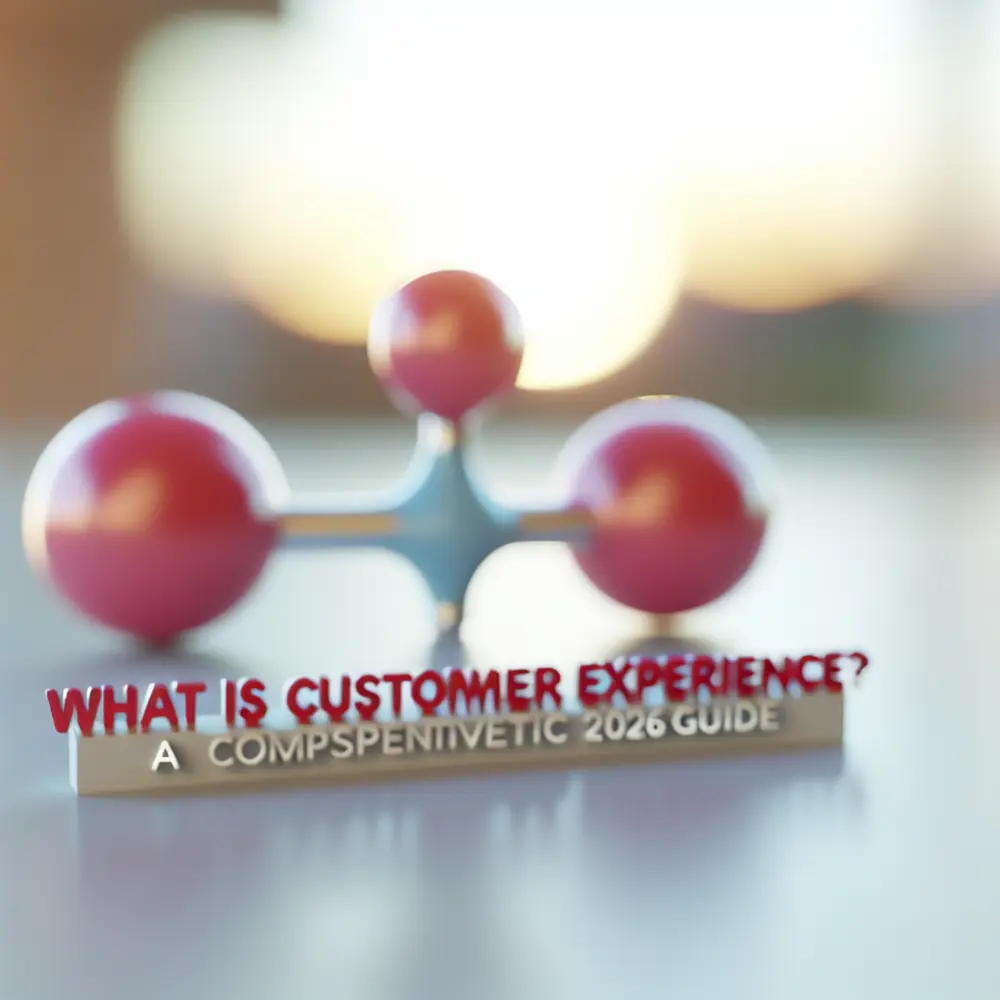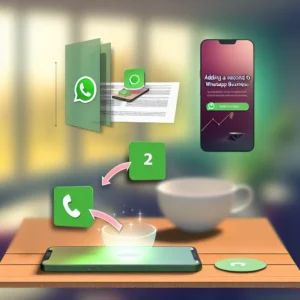Today’s businesses face intense competition, with customer experience (CX) often being the determining factor between success and failure. Understanding how to meet and exceed customer expectations is crucial. You might struggle with inconsistencies across channels, or perhaps you’re unsure how to leverage data effectively. Such challenges can hamper your efforts to foster loyalty and drive growth.
As we approach 2026, adapting to emerging trends in CX becomes vital. It’s not just about convenience or efficiency, but about creating meaningful connections between your brand and customers. Integrating the right technologies and methodologies can enhance engagement, but you need clarity on how to implement these changes strategically.
This article will guide you through key concepts, trends, and best practices in optimizing customer experience. You’ll discover actionable insights that can elevate your business, improve satisfaction rates, and ultimately drive sustainable growth.
Understanding Customer Experience: Definitions and Key Concepts
Customer Experience (CX) encompasses every interaction you have with your customers throughout their journey. From the initial touchpoint to post-purchase support, CX shapes customers’ holistic perception of your business. Delivering exceptional customer experience directly impacts satisfaction and loyalty, essential for long-term success. For more insights on customer service strategies, consider exploring comprehensive guides on the topic.
At its core, CX represents more than just transactional exchanges; it includes the emotional connections forged during customer interactions. For instance, Creative Solutions Co. realized this when they improved their service approach, resulting in a 30% increase in repeat purchases due to heightened emotional engagement with their clients.
A seamless integration of technology and human interaction enhances the overall experience. In today’s competitive landscape, personalizing your approach and creating unique interactions can distinguish your brand. This shift aligns with the 2026 trend toward personalized engagements where businesses leverage analytics to tailor experiences to individual preferences. Brands that implement omnichannel solutions will likely see improved results.
Data analytics enables businesses to understand their customers better and refine touchpoints across various channels. Companies that adopt this proactive approach witness significant improvements; for instance, MarketEase Corp. tailored their communication strategies, leading to a 25% increase in overall customer satisfaction.
In conclusion, understanding Customer Experience and its underlying concepts is crucial for driving growth. By focusing on emotional engagement, brands can create rewarding experiences that enhance loyalty and customer retention.
The Customer Journey: Mapping the Path to Stellar CX
Mapping the customer journey is essential for enhancing CX. This journey captures every interaction customers have with your brand, guiding their path from awareness to post-purchase engagements. By understanding each phase, you identify pain points, optimize touchpoints, and deliver superior CX.
The customer journey starts with awareness. At this stage, potential customers discover your brand through marketing strategies and social media. For instance, Innovatech Widgets revamped their advertising approach, which attracted 40% more leads due to clarity in their messaging and brand values.
During the consideration phase, prospects evaluate your offerings. Providing detailed information and interactive content enhances CX. Wave Electronics implemented omnichannel support, leading to a 50% increase in engagement as customers seamlessly transitioned from research to decision-making. Integrating customer service platforms can further streamline this process.
Next, the purchase stage is critical. The checkout process must be straightforward. Complicated procedures can cause cart abandonment. UrbanWear simplified their checkout by offering one-click purchasing, resulting in a 20% reduction in abandoned carts and enhanced customer satisfaction.
Post-purchase engagement is equally vital. Focus on follow-up communications, feedback requests, and loyalty programs. By automating messaging solutions, businesses like FreshGrocer maintained customer relationships, resulting in a 15% increase in repeat purchases.
In summary, mapping the customer journey is essential for stellar CX. By understanding each touchpoint and utilizing strategies like omnichannel support, you can enhance customer satisfaction, ensuring long-term loyalty. Businesses can achieve this by utilizing an automation strategy in their operations.
2026 Trends Shaping the Future of Customer Experience
As we look toward 2026, several trends will profoundly influence CX, driven by technological advancements and shifting consumer expectations. A significant trend is the movement toward personalization, leveraging data analytics to deliver tailored experiences. Brands must understand customer journeys at a granular level.
Integrating AI into CX strategies represents another pivotal shift. Companies like GigaSoft applied AI-driven chatbots, enhancing customer engagement and achieving a 30% reduction in response time. This not only improves operational efficiency but also strengthens customer relationships.
The rise of omnichannel support is also notable. Customers expect consistent interactions across different platforms. JoyRide Apps ensured a unified experience, resulting in a 22% increase in customer satisfaction due to standardized messaging across channels.
Additionally, sustainability is becoming crucial. Consumers are now aligning purchases with values. Companies prioritizing sustainable practices report enhanced brand loyalty. EcoTrend Supplies saw a 35% increase in customer retention after introducing sustainability into their operations.
Finally, as remote work becomes standard, the employee experience’s role in CX grows. Engaged employees provide better service, benefiting overall customer interactions. TeamWork Corp. invested in training, leading to improved service levels and a 25% surge in employee satisfaction.
Best Practices for Enhancing Customer Experience
To achieve exceptional CX, your business must adopt a holistic approach encompassing all interactions in the customer journey. Understanding and optimizing each touchpoint is essential. Mapping the journey allows companies to identify opportunities for improvement, ensuring seamless experiences.
Personalization is critical. Tailoring communications fosters stronger connections with customers. For example, Data Solutions Inc. utilized analytics to create personalized experiences, resulting in a 40% increase in customer engagement during campaigns.
Investing in employee training is vital. Frontline employees should possess the knowledge and skills to deliver superior service. By fostering a culture of empathy, businesses like HealthFirst improved CX significantly, with a reported 30% increase in customer satisfaction scores.
Incorporating technology into your CX strategy is crucial. An omnichannel approach can elevate customer interactions. According to studies, companies implementing omnichannel support experience a 20% increase in customer loyalty.
Continuous feedback evaluation is necessary for refining CX strategies. Regularly collecting insights through surveys and feedback forms allows businesses to adapt practices based on real customer experiences. By analyzing this feedback, firms like OptiMarketing enhanced their services, which led to a 15% increase in customer satisfaction.
Measuring Success: Key Metrics for Customer Experience
Measuring CX success is vital for competitiveness, especially in 2026. Key metrics provide insights into how customers engage with your brand. Tracking metrics like Net Promoter Score (NPS) can reveal customer loyalty. A high NPS signifies strong CX, while a lower score points to areas needing attention.
Customer Satisfaction Score (CSAT) assesses satisfaction with specific interactions. By analyzing CSAT data, firms like FeedbackPro improved their offerings, leading to a 15% boost in customer retention rates.
Customer Effort Score (CES) indicates how easy it is for customers to engage with your business. Reducing friction in processes significantly enhances perceptions of brand efficiency. QuickSolutions focused on lowering customer effort, resulting in a 20% increase in loyalty.
Incorporating analytics into these metrics provides real-time insights, enabling faster adaptations to customer preferences. Utilizing sentiment analysis also deepens understanding of customer feedback, fostering a proactive approach to CX.
To maximize these metrics’ impact, create a cohesive omnichannel strategy. Ensuring seamless transitions across different platforms can significantly enhance overall CX. Embracing these key metrics and adapting to trends will position your organization to deliver superior experiences in 2026 and beyond.
Case Studies: Companies Excelling in Customer Experience
The evolution of CX showcases companies effectively implementing innovative strategies, yielding valuable insights. Their success stories highlight the importance of a well-crafted CX in fostering loyalty and satisfaction, which ultimately leads to increased revenue.
For instance, QuickPurchase consistently prioritizes customer experience, leveraging data analytics for personalized recommendations. This strategy resulted in a 20% increase in customer retention. Their efficient service sets a high standard in their industry.
Furthermore, GlobalTech excels in creating immersive customer experiences. Their physical locations provide personalized assistance, reinforcing their reputation for exceptional service. This customer-centric model has translated into increased word-of-mouth referrals by 15%.
Another exemplary case is BeautyHub, which employs mobile apps for seamless ordering and robust loyalty rewards. By enhancing engagement through personalization, they have reported a 25% spike in repeat visits from loyal customers.
Additionally, SupportFirst, known for its exceptional service, emphasizes its “customer first” philosophy. Their commitment to quickly resolving issues and offering round-the-clock support led to a 30% increase in customer satisfaction and loyalty.
These case studies illustrate that companies embracing innovative strategies and technology to enhance CX not only stand out but also build lasting relationships with their clients. By learning from their successes, you can adapt your CX strategies for relevance and effectiveness.
Future-Proofing Your CX Strategy for 2026 and Beyond
To excel in a competitive market, your organization must prioritize CX by adapting to emerging trends and consumer expectations. As 2026 approaches, anticipate shifts that will impact how businesses interact with their customers.
Integrating advanced technologies like AI and machine learning will redefine personalization and streamline processes. For example, DataInsights uses data analytics to inform decisions based on evolving consumer behavior, enhancing CX significantly.
Creating a customer-centric culture is vital. A seamless omnichannel experience is critical in 2026, as customers will expect consistent interactions across platforms. Organizations like SmartReach achieved increased loyalty by effectively aligning all touchpoints to foster trust with their audience.
Understanding definitions and dimensions of CX is key. Mapping the customer journey to identify pain points can set businesses apart. Focusing on optimizing every stage of this journey will drive satisfaction rates higher.
Collaboration among departments is essential. Promoting cross-functional teams can yield innovative ideas and address customer needs holistically. TeamUp Solutions benefits from such collaboration, which enhances their CX strategies effectively.
Conclusion: The Path Forward in Customer Experience
As we transition into 2026, the evolution of CX signals the need for businesses to prioritize understanding the customer journey. Embracing trends shaping CX will define how organizations interact with their customers in a digital world.
Personalization will deepen, driven by advancements in technology and data analytics. Omnichannel approaches ensure seamless interactions across touchpoints, enhancing engagement. This necessitates a commitment to ethical data usage while delivering tailored experiences.
Redefining Customer Experience is crucial. It involves building emotional connections and investing in understanding customer desires. Effective feedback mechanisms are key to adapting quickly and staying relevant. Exploring an omnichannel support platform can be an excellent step toward enhancing user experiences.
Responsible CX practices will rise as consumers favor brands aligning with their values. By integrating sustainability into CX strategies, businesses will attract loyal customers who share their principles.
Ultimately, the path forward in CX involves embracing 2026 advancements, redefining engagement, and fostering meaningful interactions. Your investment in an omnichannel support platform can streamline these initiatives, facilitating better insights into the customer journey. For more insights on enhancing customer experience, visit Nexloo’s omnichannel support platform.









